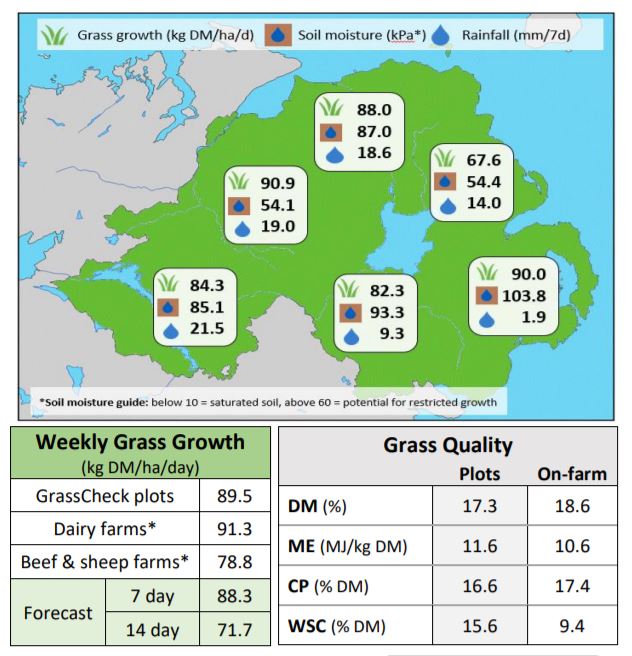It may seem surprising, but overall spring grass growth is now up on the long-term average, according to the latest GrassCheck data.
It’s a real turn-around from the start of the season when growth was set back by three weeks in most parts of the province.
Strong growth in the last two weeks of May resulted in a total spring yield of 4.4t DM/ha; a 5% increase on the long-term average.
It means the overall spring yield is now up by more than 2,300kg/Ha on the 10-year average.
However, looking forward, the warm weather means soil moisture has become one of the biggest limiting factors – particularly to the east of the province.
A slight reduction in temperatures and continued dry conditions means growth rates are expected to fall marginally in the next week.
Just 1.9mm of rainfall was recorded in Co. Down compared to 21.5mm recorded out west in Co. Fermanagh.
It’s expected that growth over the next few weeks will track closer to the 10-year average.
Over the next seven days, researchers expect growth to drop to 88.3kg DM/ha/day, with the 14-day forecast sitting at 71.7kg DM/ha/day.
This week’s GrassCheck management notes advise:
- Grass quality is continuing to fall with many plants reaching heading. Pre-mowing, topping or taking paddocks out for silage will ensure good quality in the next rotation;
- Walk the farm and do a forage budget to identify potential for removing surplus grass;
- Where growth remains strong, responses of over 25kg DM of grass can be achieved from every 1kg of N fertiliser applied. Review fertiliser and slurry plans to make the most of this return.
GrassCheck
Established in 1999, the GrassCheck project aims to provide up-to-date grass information to assist farmers with grassland management decisions.
In 2017, the project included 35 farmers across a variety of systems spread around Northern Ireland. This year the number of farms involved increased to 50.


